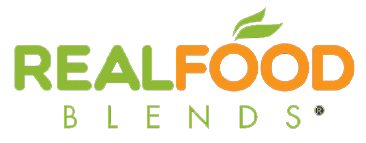By Sharon Weston, MS, RD, LDN, CSP, FAND
When it comes to providing enteral nutrition, one persistent myth is that blenderized tube feeding (BTF) is too difficult or impractical for healthcare professionals (HCPs) to manage. While concerns around safety, consistency, and nutritional adequacy are valid, advances in knowledge, equipment, and product availability have transformed blended tube feeding into a safe, manageable, and evidence-based option for clinical use. With the right support, BTF is not only feasible, but it can bring powerful clinical, nutritional, and psychosocial benefits for patients and families.
Blenderized tube feeding involves the use of whole foods or purees that are blended to a consistency suitable for administration via a feeding tube. These formulas may serve as a supplement to traditional commercial formulas or as the sole source of nutrition for individuals with enteral access.
Historically, BTF is far from a new idea. Its origins date back to 1500 BC, with records from Ancient Egypt describing food-based preparations to treat bowel disorders and promote health. By the early 20th century, hospitals routinely used food blends for tube feeding. It wasn’t until the 1970s when commercial enteral formulas gained popularity due to their consistent nutrient profiles, ease of preparation, and lower contamination risk that BTF saw a sharp decline in clinical use. However, the 21st century has seen a resurgence in the use of BTF, driven by a growing desire for a more natural approach to feeding using real food options to improve gut health and provide more personalized nutrition.
Many healthcare professionals express concern that blenderized tube feeding, especially homemade, is too thick, complex, or risky to administer. In reality, modern tools and commercial options make administration easier than ever.
- Tube Size and Feeding Method: A 14 French G-tube or larger is typically recommended to avoid clogging. BTF can be delivered using a large syringe (bolus), gravity feed with a Bolee Bag®, or via a pump depending on the thickness and patient tolerance.
- Blender Technology: High-powered blenders ensure smooth consistency, reducing the risk of clogging. Blends can also be strained if needed.
- Commercial Blenderized Tube Feeding Products (CBTF): These formulas may or may not be nutritionally complete, shelf-stable, and ready-to-feed, requiring no refrigeration or blending. CBTF options support busy clinical settings, schools, travel, and hospital stays without compromising the “real food” benefits. Real Food Blends® is a ready-to-feed commercial option that offers 100% real food meals and no synthetic ingredients. In fact, it’s the closest to a homemade blenderized diet, compared to other blenderized enteral formulas.
Of note, while some may be tempted to over-thin blended feeds for ease of administration, thicker consistencies have been associated with imparting clinical benefits such as reduced reflux, gagging, and GI symptoms, and so overthinning should be done with caution.
Another myth is that blenderized tube feeding cannot provide consistent, complete nutrition. However, this has been disproven in both clinical studies and practical settings. With guidance from a registered dietitian, blenderized diet recipes can meet all macro- and micronutrient needs. In fact, blenderized feeds allows for more flexibility, cultural relevance, and personalization than standard formulas.
Ways to optimize nutrition in blenderized tube feeding:
- Include a variety of food groups: fruits, vegetables, grains, lean proteins, and healthy fats
- Use fortified foods (e.g., fortified milk alternatives, cereals)
- Add multivitamins/minerals as liquids, powders, or crushed tablets
- Supplement electrolytes as needed (e.g., salt, sodium/potassium chloride)
- Adjust ingredients for allergies or intolerances
For assurance, blends can be analyzed using dietary software. Some care teams opt for a hybrid approach, combining standard enteral formulas with blenderized tube feeding to ensure complete nutrient coverage while introducing real food benefits.
The impact of blended feeds goes beyond the feeding tube. Patients and families report quality of life improvements, including:
- Better gastrointestinal tolerance (less gagging, vomiting, reflux, or constipation)
- Greater satisfaction and emotional connection with meals
- Inclusion of preferred or culturally significant foods
- A sense of empowerment and participation in care decisions
- Support for oral feeding transitions in children or adults with feeding difficulties
Studies have shown that patients receiving blenderized tube feeding may experience better clinical outcomes, including improved growth, weight gain, and reduced healthcare utilization in some populations.
Blended tube feeding is rapidly becoming a mainstream nutritional strategy in home care, pediatrics, long-term care, and even hospital settings. The increase in clinical education, published research, and product innovation means HCPs are now better equipped than ever to offer blended feeds safely and confidently. Professional organizations and nutrition societies are also beginning to recognize the use of blended tube feeding as a viable option for many patients, especially when supported by an interprofessional team including dietitians, nurses, and physicians.
If you’re a healthcare provider considering blenderized tube feeding, here are some tips for successful implementation:
- Involve a Registered Dietitian Early: Ensure nutritional adequacy and tailored recommendations.
- Start Slowly: Try blended tube feeding as one feed per day and monitor tolerance.
- Educate Families: Provide handouts or training on food safety, preparation, and administration.
- Use Commercial BTF: These options ease the transition and support safety in settings where homemade blends are impractical.
- Maintain Open Communication: Listen to family preferences and concerns and create a collaborative feeding plan.
Today’s blenderized tube feeding options, homemade or commercial, are clinically practical, nutritionally sound, and emotionally rewarding. With a little planning, blenderized diets can enhance tolerance, meet nutritional goals, and improve the lives of patients and their families. As healthcare professionals, embracing blenderized tube feeding as part of a comprehensive, patient-centered approach to nutrition is not just feasible, but can be a meaningful way to support individualized care and improve patient outcomes.
Sharon Weston is a consultant for Nutricia North America and has been compensated to write this blog post.
References
- Weston, S., Algotar, A., et al. (2025). State‐of‐the‐art review of blenderized diets—Status and future directions. Journal of Pediatric Gastroenterology and Nutrition (JPGN), 2025.
- Hron, B., Fishman, E., et al. (2019). Health outcomes and quality of life indices of children receiving blenderized feeds via enteral tube. The Journal of Pediatrics, 211, 139–145.e1. https://doi.org/10.1016/j.jpeds.2019.03.047
Comments are closed.






